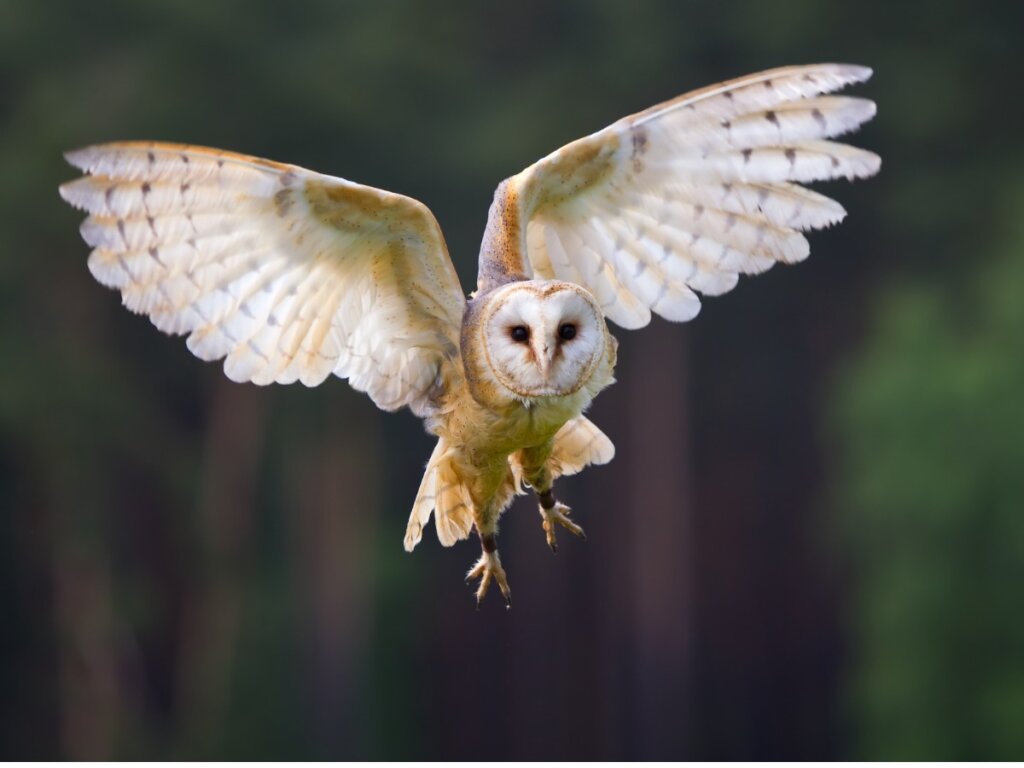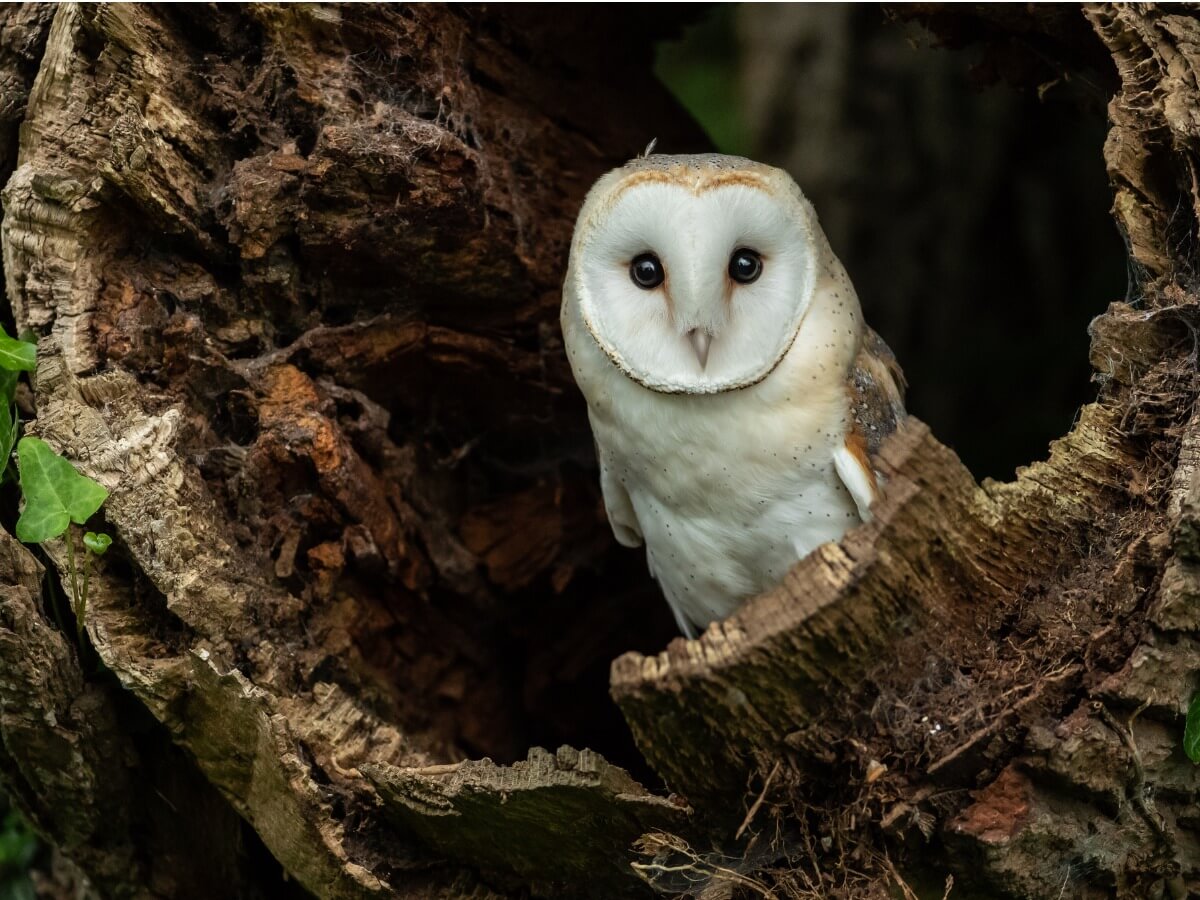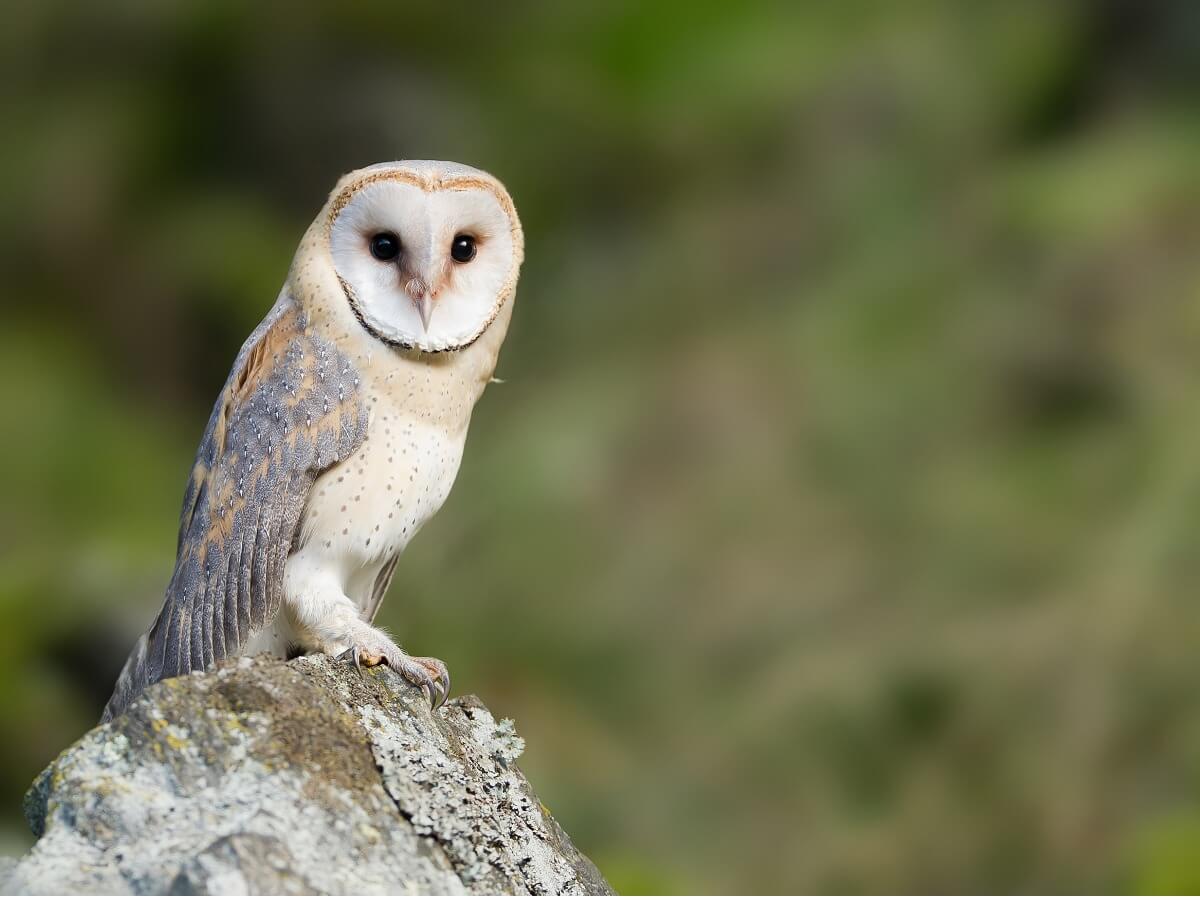The Barn Owl: Habitat and Characteristics

The barn owl (Tyto alba), also known as the common owl, is a bird of the order Strigiformes, belonging to the Tytonidae family. It’s one of the most cosmopolitan bird species in the world, as it inhabits practically the entire globe – except for some regions and areas with extreme climates.
Phylogenetic analyzes have shown that there are at least 3 lineages of this species, one in Europe, Western Asia and Africa, another in Southeast Asia and Australasia, and another in the regions of the Americas. Some professionals even argue that this bird could be divided into 5 different species. If you want to know more about the barn owl and its current situation, read on.
Habitat of the barn owl
As we have said, this bird is one of the most widely distributed on the entire planet. It’s found on all continents except Antarctica, from Europe to Australia, passing through various islands in the Pacific, all of America, Africa, and Asia.
The only places you can’t find it are in deserts, polar zones, inhospitable mountain peaks, and some remote islands. It’s considered a sedentary species, as it establishes itself in a specific area and doesn’t move from it, despite the fact that there are more favorable environments nearby.
As the Brinzal association indicates, the barn owl is typical of open spaces, such as cultivated fields, steppes, or fallows. To rest and be able to scan the horizon, they usually choose holes at a certain height from the ground, either natural or man-made. It’s typical to observe specimens in the hollows of the trunk of a tree, but they also populate hollows of ravines, churches, old houses, and attics.

Physical characteristics
The barn owl is unique, with its medium size and beautiful ivory color that covers its feathers. There’s a clear variation in size between subspecies, but the typical specimen measures between 33 and 39 centimeters (13-15 inches) in adulthood. The weight is also very variable; depending on the locality, they can range from 220 to 710 grams (0.5 to 1.5 lbs).
The tone of the feathers changes according to each subspecies, but the dorsal part usually varies from gray to brown. The head, shaped like a heart, always has a pure white coloration. The eyes are black and the beak also has an ivory hue, in keeping with the rest of the head region. The age and sex of each specimen are other factors that modify their color patterns.
In continental European populations, a greater number of spots and tones imply a better state of health, at least in females.
The subspecies of the barn owl, by continents
As we have said, the phylogenetic situation of the barn owl is very confusing. Some studies estimate that there are up to 30 subspecies grouped into 3 different evolutionary units, while others stipulate that, in reality, this bird encompasses 5 different species. The situation remains unclear, but almost everyone agrees that there are different lineages depending on the region.
Depending on the region we focus on, several subspecies of barn owl can be distinguished. We present the most important and recognized at the taxonomic level:
- Europe: This includes the subspecies Tyto alba alba, Tyto alba guttata and Tyto alba ernesti. T. alba alba are the typical owls, the ones we usually imagine when talking about this animal.
- Africa: This comprises 6 subspecies; Tyto alba affinis, Tyto alba detorta, Tyto alba poensis, Tyto alba gracilirostris, Tyto alba thomensis and Tyto alba schmitzi.
- Asia: Here there are 5 subspecies: Tyto alba erlangeri, Tyto alba stertens, Tyto alba javanica, Tyto alba deroepstorffi and Tyto alba sumbaensis.
- North America: There is only one subspecies here, Tyto alba pratincola.
- South America and Central America: Here, there are 10 different subspecies, spread over the regions of humid and tropical climates.
- Oceania: This area has 4 subspecies; Tyto alba delicatula, Tyto alba meeki, Tyto alba crassirostris and Tyto alba interposita.
After reading this article, you’ll be able to understand why it is said that there is a real phylogenetic confusion as far as this species is concerned. The range of the barn owl is so wide and dates back so many years that it’s very difficult to establish the proximity and the boundary between the taxa that comprise it.
Barn owl feeding
Barn owls are predatory animals of insects and mammals, but they can also eat reptiles, amphibians and other smaller birds sporadically. This bird is a generalist hunter, although it has been detected that it has a predilection for small mammals such as voles, rats, voles and shrews.
As indicated by the SEO Birdlifeportal, this species has a very high metabolic rate, which forces it to spend much of the afternoon and night looking for prey. As a curiosity, it should be noted that the ears of these birds appear asymmetrically in the skull. Thanks to this, they are able to detect sounds with unusual excellence, so that they don’t have to depend so much on their eyes to hunt.
Island-resident subspecies are believed to be smaller because they must base their diet on insects. Meanwhile, continental specimens have at their disposal small mammals to hunt.
Reproduction
Barn owls aren’t particularly territorial, but they do have an area that they consider to be “home,” in which they hunt and carry out their daily activities.
Normally, a specimen’s terrain extends 1 kilometer from the nest, although the foraging area of adult females overlaps with that of their mate. This species is monogamous and the reproductive duos remain together until one of them dies.
Once a pair is formed, the male performs a series of exploratory flights, with which he establishes the nesting range. After this act, a very complex courtship takes place, which ends with the female laying from 2 to 9 eggs – with an average of 5. The incubation period lasts about 30 days, but the wait is worth it: this species shows a hatching success rate of 75%.
In the first weeks of breeding, it’s the male that is responsible for bringing all the food to the nest. From one month of age, the female begins to venture abroad as well, in order to hunt more food to provide for her offspring. Chick growth culminates approximately 30 weeks after hatching.
Although they can breed throughout the year, these birds show clear seasonal patterns, which are adapted to the region in which they live.
State of conservation
It’s difficult to establish a general conservation status for the species, as its range is immense and the most appropriate thing would be to evaluate each subspecies separately. However, the International Union for Conservation of Nature (IUCN ) states that the barn owl is in the category of ‘least concern (LC)’.
It is estimated that around the world there could be about 10 million individuals, although 20% of them are found in the regions of the Americas. However, in some areas, these birds have experienced a drastic decline, due to the use of insecticides in the fields – such as DDT – and the application of rodenticides to crops, which deprived the owl of its prey.
If the status of this bird is unified without taking into account its complicated phylogenetic situation, it can be said that it’s the second most widespread bird of prey in the world, only surpassed by the peregrine falcon (Falco peregrinus). However, in some parts of the globe – such as Canada – it’s increasingly difficult to see specimens.

Curiosities and final notes
Historically, different rural cultures have given this bird an “ominous aura” due to its ghostly appearance and nocturnal habits. Negative preconceptions about this species are always going to be wrong. They have no interest in attacking humans, and they also get rid of small mammals that can be pests for crops.
Fortunately, the general population has become globally aware of the importance of this species. Many regions have promoted the placement of brood boxes, which also allow behavioral studies of this species to be carried out, while respecting its natural reproductive cycle. We need a joint effort to ensure that the barn own will remain with us for centuries.
All cited sources were thoroughly reviewed by our team to ensure their quality, reliability, currency, and validity. The bibliography of this article was considered reliable and of academic or scientific accuracy.
- Lechuza común (Tyto alba), Brinzal. Recogido a 14 de junio en https://brinzal.org/portfolio/lechuza-comun/
- Lechuza común, SEO Birdlife. Recogido a 14 de junio en https://seo.org/ave/lechuza-comun/
- Uva, V., Päckert, M., Cibois, A., Fumagalli, L., & Roulin, A. (2018). Comprehensive molecular phylogeny of barn owls and relatives (Family: Tytonidae), and their six major Pleistocene radiations. Molecular phylogenetics and evolution, 125, 127-137.
- Tyto alba, IUCN. Recogido a 14 de junio en https://www.iucnredlist.org/species/22688504/155542941
